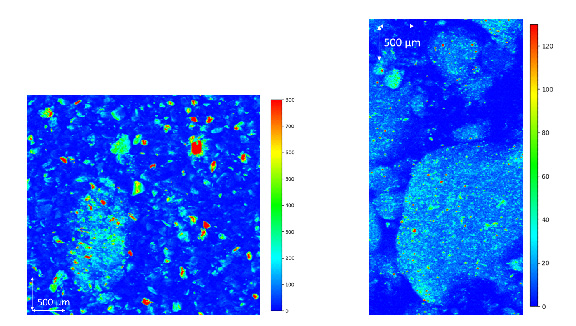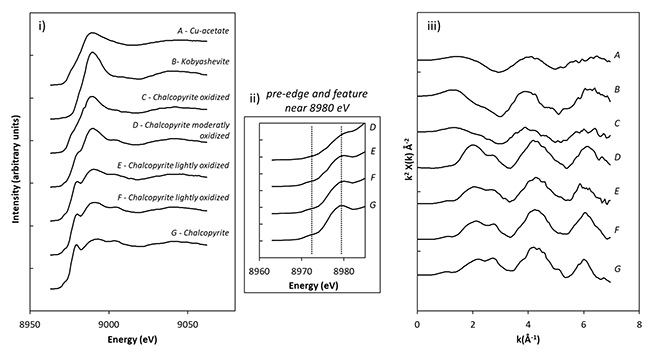Post-mining management in France is a critical concern due to the potential impact of historical mining activities on environmental quality. In lakes and rivers, solid matters which continuously accumulate at the bottom are potential sinks of dispersed metals downstream of mining sites and indeed monitored and studied.
A team of scientists from the Institut de Radioprotection et de Sûreté Nucléaire (IRSN) and the Laboratoire Géosciences Paris-Saclay (GEOPS) focused on identifying the nature of the compounds carrying these metals in the sediments of a reservoir near a former copper and tin mine.
The knowledge of solid speciation and distribution, and chemical forms of these elements in soil is essential to understand their redistribution during hydrolysis, oxidation, transport, and storage processes.
To address these challenges, sediments from the Saint-Clément reservoir in Allier (Auvergne Rhône-Alpes, France) were investigated. Upstream of this reservoir lies the former copper and tin mine at Charrier. The extracted ore consisted mainly of copper sulfides (chalcopyrite, CuFeS₂) and tin oxides (cassiterite, SnO₂). Mine tailings generated during ore extraction are stored in piles for mining waste disposal, which are specific installations dedicated to mining waste storage. This study revealed elevated copper (Cu) and tin (Sn) concentrations in these sediments compared to local background levels (i.e., natural concentrations of chemical elements).
The study of minerals and metal-bearing phases, for which chemical elements like metals exist as distinct minerals or compounds, helps to trace their origin. The scientists from IRSN and GEOPS focused on identifying the nature of Cu and Sn-bearing phases in sediments from the Saint-Clément reservoir.
Several questions motivated this study: Do the Cu and Sn-bearing phases detected in reservoir sediments (solely) originate from the mine tailings at Charrier? What are the chemical forms of Cu and Sn? Once these mineralogical determinations are made, what is the reactivity of the bearing phases? To answer these questions, samples of mine tailings were analyzed alongside sediment samples.
To study the nature of bearing phases in the samples, various analytical tools, both direct and indirect, were employed. Initially, Scanning Electron Microscopy (SEM) analyses were conducted to identify the main bearing phases. These first characterizations revealed the presence of chemical species extracted from the mine. These analyses revealed that Sn primarily occurs in cassiterite (a tin dioxide mineral) in both Charrier tailings and sediments. For Cu, a greater diversity of bearing phases was observed, including a significant phase of interest, chalcopyrite, a copper sulfide, and a Cu fraction associated with organic matter present in the sediments.
In addition to these initial analyses, two analytical techniques were used at SOLEIL on the PUMA beamline to obtain more information on Cu distribution in studied metal-bearing species, its speciation, and the local chemical of Cu atoms. Micro-X-ray fluorescence (µXRF) mapping allowed for the mapping of Cu distribution in sediment samples at a micron scale, while X-ray Absorption Near Edge Structure (XANES) spectroscopy determined the solid speciation of Cu. Due to the small particle size of Cu-bearing phases within the sediments, analyses were performed using a microbeam.

Figure 1: µXRF maps of copper in (left) a sample of tailings from Charrier, and (right) sediment from the Saint-Clément reservoir. Note the difference in particle size between the two types of samples.
After identifying the Cu-rich zones in the samples (Figure 1), µXANES spectra were acquired and compared with reference phases to determine their nature.

Figure 2: µXANES spectra at the copper edge acquired from samples of mining residues from Charrier illustrating the diversity of observed phases. Spectra A and B serve as references: Cu-acetate illustrates the Cu-organic molecule bond, and kobyashevite is a copper sulfate.
µXRF and µXANES analyses of mine tailings revealed that Cu is predominantly present as isolated particles ranging from slightly to highly oxidized chalcopyrite, along with other copper phases such as sulfates (Figure 2).
Similarly, in sediments, Cu is found as isolated small particles, primarily as chalcopyrite, with very few oxidized phases. These ones may originate from tailings of the former Charrier mine.
Several conclusions can be drawn from this study. First, analysis of sediments from the Saint-Clément reservoir indicated the transport of trace element-rich particles (Cu, Sn) originating from Charrier mine tailings, evidenced by the presence of cassiterite and residual sulfur-rich minerals containing copper.
Furthermore, copper-bearing phases in Charrier mine tailings were found to be more diverse and oxidized compared to the original ore minerals (sulfides), indicating partial alteration. This alteration facilitates Cu redistribution and potential dissemination on a broader scale into compartments beyond the tailings.
